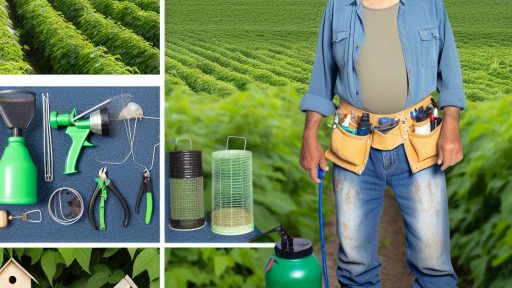Understanding the Importance of Succession Planning in Agriculture
Foundation for Sustainable Growth
Succession planning forms the bedrock of sustainable growth in agricultural enterprises.
It ensures continuity when ownership changes hands.
Moreover, it safeguards the farm’s legacy and values.
Having a plan in place prevents disruptions in operations.
This proactive approach fosters financial stability.
Facilitating Transition and Knowledge Transfer
Effective succession planning facilitates seamless transitions.
It allows for the transfer of vital knowledge and skills.
Experienced operators can share insights with the next generation.
This knowledge exchange improves overall farm management.
Consequently, it enhances decision-making processes.
Engaging the Next Generation
Engaging younger family members is crucial for a successful transition.
Youth often bring fresh ideas and modern techniques to the farm.
Encouraging their involvement fosters a sense of ownership.
This involvement prepares them to take on future responsibilities.
Therefore, succession planning encourages their investment in the farm’s success.
Transform Your Agribusiness
Unlock your farm's potential with expert advice tailored to your needs. Get actionable steps that drive real results.
Get StartedEnsuring Financial Health
Succession planning plays a key role in maintaining financial health.
A well-structured plan minimizes tax burdens during transitions.
It also facilitates access to funding and investment opportunities.
Moreover, it helps maintain agricultural viability in fluctuating markets.
Thus, it ensures ongoing financial support for the business.
Meeting Regulatory Requirements
Compliance with legal regulations is critical for farm operations.
Succession planning addresses legal and financial obligations effectively.
It helps ensure all necessary documentation is in order.
This preparation avoids potential disputes among family members.
Furthermore, it promotes smoother transitions in ownership and management.
Identifying Key Stakeholders in Farm Succession
Understanding Stakeholders
Identifying stakeholders is vital for effective succession planning.
These individuals can influence the farm’s future and prosperity.
Stakeholders typically include family members, employees, and advisors.
Family Members
Family members often play a crucial role in succession planning.
They may have emotional and financial investments in the farm.
Open communication is essential among family members.
This helps clarify roles and responsibilities.
Additionally, it’s important to discuss expectations and visions for the farm.
Employees and Key Personnel
Employees are vital to the farm’s operation and success.
Identifying key personnel can ensure smooth transitions.
Regularly engaging with employees fosters loyalty and commitment.
Encouraging their input can provide valuable insights for the future.
Advisors and Professionals
Consulting advisors can greatly enhance succession planning.
Professionals such as accountants and lawyers offer critical guidance.
Showcase Your Farming Business
Publish your professional farming services profile on our blog for a one-time fee of $200 and reach a dedicated audience of farmers and agribusiness owners.
Publish Your ProfileTheir expertise can help navigate complex legal and financial issues.
Building a strong advisory team is beneficial for sustaining growth.
Community and Networking
Local community members and networks also influence farm management.
Engaging with local agricultural associations can provide support.
Networking opens doors to resources and best practices.
Furthermore, collaboration with neighboring farms can enhance resilience.
Including Future Generations
Involving future generations is essential for long-term planning.
Their perspectives can add fresh ideas and innovation.
Understanding their aspirations enables better alignment with farm goals.
Encouraging young family members to contribute promotes investment in the farm’s future.
Assessing the Current Farm Financial Health and Growth Potential
Understanding Financial Health
Farm financial health reflects the overall stability of the business.
It includes profitability, liquidity, and solvency aspects.
Analyzing financial statements provides valuable insights into this health.
Furthermore, ratios like current and quick ratios assess liquidity.
Long-term viability hinges on understanding debt levels versus assets.
Evaluating Profitability
Profitability indicates how effectively a farm generates income.
Calculate net income after taking all expenses into account.
Compare this income with total sales to determine profit margins.
Consider historical profitability trends for a clearer picture.
Assessing Growth Potential
Growth potential relies on various market and operational factors.
Evaluate market demand for products in your region.
Investigate current crop prices and trends to gauge opportunities.
Additionally, consider the impact of technology on farming practices.
Identifying Financial Risks
Financial risks can jeopardize farm stability and growth.
Identify external factors, such as market fluctuations or weather issues.
Internal risks may include mismanagement or unexpected expenses.
It is vital to develop contingency plans to mitigate these risks.
Implementing Effective Financial Strategies
Implement strategies to enhance both financial health and growth potential.
Regular budgeting and forecasting should guide business decisions.
Invest in technology and training to improve operational efficiency.
Engage with financial advisors for tailored advice and insights.
Gain More Insights: Diversification and Biodiversity: Benefits for Modern Farms
Creating a Succession Timeline: Milestones and Goals
Defining Key Milestones
Identifying critical milestones is essential for effective succession planning.
These milestones guide the transition process for your farm.
Start by outlining both personal and business goals.
Subsequent steps should include assessing current operations.
Additionally, gather input from all family members involved.
Setting Realistic Goals
Your goals should align with the overall vision for the farm.
Consider short-term and long-term objectives.
For instance, you might prioritize debt reduction initially.
Showcase Your Farming Business
Publish your professional farming services profile on our blog for a one-time fee of $200 and reach a dedicated audience of farmers and agribusiness owners.
Publish Your ProfileThen, focus on productivity and market expansion.
Collaborate with the family to ensure everyone’s aspirations are considered.
Establishing a Timeline
Creating a timeline will help track the progress of your succession plan.
Start with immediate goals, then map out medium and long-range objectives.
Incorporate specific dates for each milestone to enhance accountability.
Regularly review and adjust the timeline as needed.
This approach fosters adaptability in changing agricultural landscapes.
Communicating the Plan
Effective communication is crucial throughout the planning process.
Share the timeline and goals with all stakeholders involved.
Encourage open dialogue about concerns and expectations.
This transparency builds trust and commitment among family members.
Moreover, it helps everyone stay aligned with the overall vision.
Monitoring Progress
Establish a system for monitoring progress regularly.
Frequent meetings can help review milestones and goals.
Encourage honest feedback to identify areas needing adjustment.
This proactive approach helps resolve issues before they escalate.
Document successes and challenges to improve future planning efforts.
Gain More Insights: Integrating IoT Devices In Contemporary Agriculture
Evaluating Family Dynamics and Communicating the Succession Plan
Understanding Family Roles
Each family member plays a unique role in the farm’s operation.
Identifying these roles helps clarify responsibilities.
Consider formalizing roles through discussions and agreements.
Open and Transparent Communication
Effective communication promotes a healthy family environment.
Encourage open discussions about succession planning.
This practice fosters trust among family members.
Regular family meetings can keep everyone informed.
Addressing Conflicts Early
Conflicts can arise during succession planning discussions.
Address issues promptly to prevent escalation.
Consider using conflict resolution techniques.
This approach encourages unity and cooperation.
Creating a Succession Timeline
A clear timeline helps keep everyone on track.
Outline specific goals and target dates.
Review the timeline regularly to adapt as needed.
This practice ensures everyone remains aligned.
Establishing a Feedback Mechanism
Feedback encourages continuous improvement of the plan.
Create opportunities for family members to express their thoughts.
Consider periodic evaluations of the succession plan.
This process promotes accountability and involvement.
Learn More: Sustainable Farming Innovations For Higher Productivity
Developing a Financial Strategy for Transitioning Ownership
Understanding the Importance of Financial Planning
Financial planning is crucial for any farm’s success.
It ensures a seamless transition when passing on ownership.
Showcase Your Farming Business
Publish your professional farming services profile on our blog for a one-time fee of $200 and reach a dedicated audience of farmers and agribusiness owners.
Publish Your ProfileMoreover, it promotes long-term financial health.
Clear financial strategies help mitigate potential conflicts.
Additionally, they maintain farm productivity during the transition.
Assessing Current Financial Health
Start by evaluating the farm’s current financial state.
This assessment includes reviewing income statements and balance sheets.
Next, identify key assets and liabilities.
Understanding cash flow is essential for future planning.
Consider bringing in a financial advisor for a comprehensive review.
Setting Clear Transition Goals
Defining specific ownership transition goals is vital.
Goals should reflect personal and business aspirations.
Involve all family members in discussions about these goals.
Regularly revisit and adjust these goals as needed.
Creating a Financial Transition Plan
A financial transition plan outlines the necessary steps for ownership transfer.
This plan should detail timelines and responsibilities.
Include strategies for handling debts and obligations.
Ensure the plan aligns with overall business objectives.
Utilizing Financial Tools and Resources
Consider using financial software tailored for farm management.
Such tools help track income, expenses, and investments.
Additionally, explore available grants and financial assistance programs.
Educate family members on how to use these resources effectively.
Maintaining Open Communication
Fostering open dialogue among family members is essential.
Regular meetings can help address concerns and track progress.
Encourage transparency regarding financial matters.
Listening to each member’s perspective builds consensus.
Preparing for Unexpected Situations
Unexpected events can disrupt planned transitions.
Develop contingency plans to address potential challenges.
Insurance options should also be reviewed and updated.
Stay proactive to minimize the impact of unforeseen circumstances.
Reviewing and Adjusting the Plan Regularly
Regular reviews of the financial strategy are necessary.
Adapt the plan to reflect changes in the economic landscape.
Gather feedback from family members after each review.
This practice ensures the plan remains relevant and effective.
Delve into the Subject: Integrating Livestock to Enhance Farm Productivity

Legal Considerations
Wills and Estate Planning
Creating a will is essential for effective succession planning.
A will outlines how assets will be distributed upon death.
It ensures family members understand your intentions clearly.
Regularly updating the will keeps it aligned with your current situation.
Establishing Trusts
Trusts provide a mechanism to manage and distribute your estate.
They can help reduce estate taxes and avoid probate delays.
Different types of trusts exist for various financial needs.
Showcase Your Farming Business
Publish your professional farming services profile on our blog for a one-time fee of $200 and reach a dedicated audience of farmers and agribusiness owners.
Publish Your ProfileConsider a revocable trust for flexibility during your lifetime.
Irrevocable trusts offer stronger protection from creditors.
Farm Business Structures
Choosing the right farm business structure is crucial for long-term success.
Common structures include sole proprietorships, partnerships, and corporations.
Each structure has distinct legal and tax implications.
Consulting with an attorney can clarify the best option for you.
Tax Implications
Tax considerations significantly impact succession planning.
Understanding capital gains taxes is critical for asset transfers.
Explore strategies to minimize tax liabilities for heirs.
Consulting with a tax advisor will provide personalized insights.
Legal Compliance
Staying compliant with local laws protects your farm’s interests.
Regularly review state regulations concerning property and estate laws.
Documentation should be maintained for all legal activities.
Implementing good record-keeping practices is essential.
Training Future Generations: Skills and Knowledge for Successful Management
The Importance of Knowledge Transfer
Transferring knowledge creates a foundation for future success.
It ensures that younger generations build on existing expertise.
Furthermore, this process fosters confidence in decision-making.
Essential Skills for Farm Management
Future managers need a mix of technical and soft skills.
- Technical skills include crop rotation and pest management.
- Financial acumen is essential for budgeting and forecasting.
- Communication skills enhance teamwork and stakeholder relations.
Mentorship and Hands-On Training
Mentorship is vital for skill development in agriculture.
Experienced farmers can provide invaluable guidance.
Additionally, hands-on training allows for real-world learning.
Engaging in daily farm operations deepens understanding.
Utilizing Technology in Training
Modern technology plays a crucial role in farm management training.
Software can assist in tracking productivity and finances.
Online courses offer flexible learning opportunities for aspiring managers.
Creating a Culture of Continuous Learning
A continuous learning culture encourages ongoing skill enhancement.
Encouraging participation in workshops keeps knowledge fresh.
Moreover, it promotes adaptability to industry changes.
Monitoring and Adjusting the Succession Plan Over Time
The Importance of Regular Reviews
Regular reviews of your succession plan are essential for success.
Change is inevitable in both agriculture and family dynamics.
Therefore, it is vital to revisit your plan periodically.
Changes in market conditions or regulatory frameworks may require adjustments.
Additionally, family member goals and interests may evolve.
Effective Communication Among Family Members
Open communication fosters a supportive environment.
Encourage family members to voice their opinions and feelings.
Facilitate regular family meetings to discuss the succession plan.
These meetings reinforce a sense of inclusion and collaboration.
Adapting to External Changes
External factors can significantly influence your farm’s operations.
Market trends, weather conditions, and technological advancements are examples.
Staying informed about these factors will help guide your succession strategy.
Showcase Your Farming Business
Publish your professional farming services profile on our blog for a one-time fee of $200 and reach a dedicated audience of farmers and agribusiness owners.
Publish Your ProfileAdjust your plan based on new opportunities or challenges.
Documenting Changes and Decisions
Carefully document any changes made to the succession plan.
This written record helps maintain clarity and accountability.
Moreover, it assists in ensuring all family members are on the same page.
Regular updates to the documentation should be part of the plan.
Seeking Professional Guidance
Consulting with professionals is often beneficial.
Accountants, attorneys, and agricultural advisors bring valuable insights.
Their expertise can help you navigate complex legal or financial considerations.
Consider involving them in periodic reviews of your succession plan.
Evaluating Performance and Long-Term Goals
Assess the performance of your farm against established goals.
This evaluation should be part of your succession plan reviews.
Identify areas of success as well as those needing attention.
Adjust your long-term goals based on these evaluations.
Embracing Flexibility
Flexibility is crucial for effective succession planning.
Be prepared to shift strategies as circumstances change.
Your initial plan may evolve considerably over time.
Staying flexible helps ensure the long-term health of the farm.




